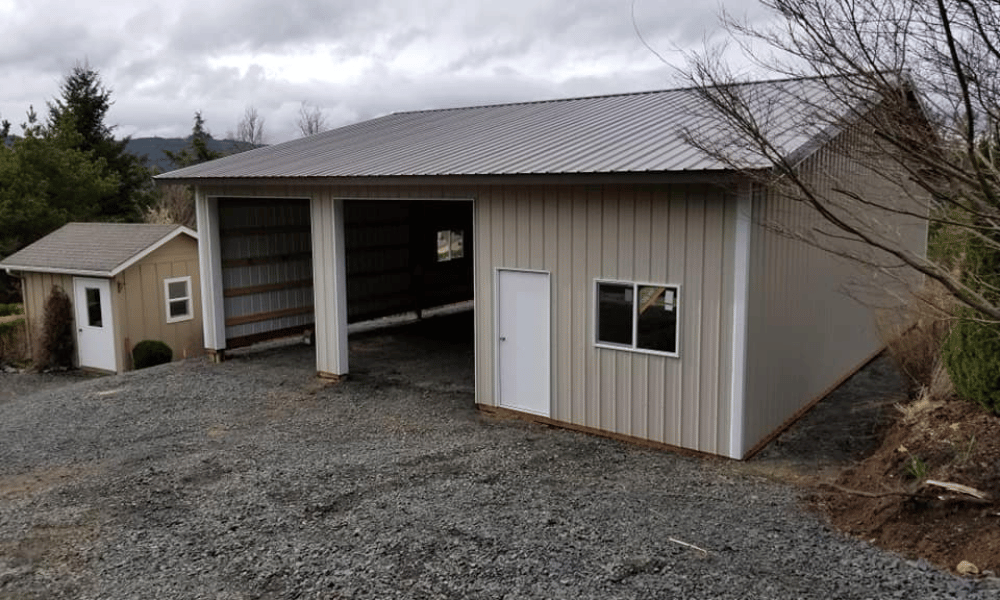Building a shed yourself can be one of the most rewarding projects you embark on. Not only does it give you a sense of accomplishment, but it also allows you to create additional space for storage or even a workshop. However, like any DIY project, constructing a shed comes with its own set of challenges. In this article, we're diving into “Five Critical Issues that Arise During DIY Shed Construction—And How to Solve Them!” So grab your tools and let’s get started!
What is DIY Shed Construction?
DIY shed construction refers to the process of building a Pole Barn Garage Builders in Springfield shed without hiring professionals. It involves planning, designing, acquiring materials, and actually putting everything together by yourself or with friends and family.
Why Build Your Own Shed?
Cost-Effective Solutions: Building your own shed can save you money in labor costs. Customization: You can tailor the design to fit your specific needs. Learning Experience: You'll gain valuable skills in carpentry and construction. Personal Satisfaction: There’s nothing quite like the pride of completing a project yourself.Issue 1: Poor Planning Can Ruin Everything
The Importance of Planning Ahead
Planning is where most DIY enthusiasts stumble. So what's the first step? Create a comprehensive plan that includes measurements, materials needed, and potential obstacles.
How to Create an Effective Plan:
- Measure your available space accurately. Decide on the size of your shed. Choose suitable materials (wood, metal, etc.). Sketch out a design including doors and windows.
Common Mistakes in Planning
- Overestimating space needs Underestimating material costs Ignoring local building codes
Solution: Detailed Blueprint Designs
Use software or graph paper to create detailed blueprints before purchasing materials. This will not only save time but also frustration during construction.
Issue 2: Foundation Fiascos—The Key to Stability
Why Foundation Matters
A solid foundation is crucial for any structure—especially sheds! If you skimp on this part, you're setting yourself up for disaster.
Types of Shed Foundations:
Concrete Slab Skids Gravel PadCommon Foundation Problems
- Uneven ground leading to structural issues Rotting wood due to moisture exposure
Solution: Level Ground Preparation
Make sure the ground is level before laying down any foundation. Use stakes and string lines for guidance!
Issue 3: Material Mismanagement—Choosing Wisely
Selecting Quality Materials
Not all wood is created equal! Using poor-quality materials can lead to structural failures down the line.
Best Practices for Material Selection
- Opt for pressure-treated lumber for outdoor projects. Choose durable siding material that can withstand weather conditions.
Avoiding Material Wastage
Overbuying or underbuying can lead to wasted time and resources.

Solution: Accurate Material Lists
Create an itemized list based on your blueprint design and double-check it before heading out to make purchases.
Issue 4: Weather Woes—Timing Your Build Right
Understanding Weather's Impact on Construction
Rain or extreme heat can ruin your day—or worse yet—your project! Knowing when to build can be as important as knowing how to build.
Best Seasons for Building Sheds
- Spring and early fall are ideal due to mild temperatures.
What Happens When You Build in Bad Weather?
Building during rain can weaken joints and cause mold growth while extreme heat may warp wood.
Solution: Check Weather Forecasts
Always keep an eye on the weather forecast before starting your project!
Issue 5: Safety Concerns—Protect Yourself First!
The Importance of Safety Gear
It might seem tedious, but using safety gear should be non-negotiable during any DIY construction project!
Essential Safety Gear Includes:
Safety goggles Work gloves Ear protection Steel-toed bootsCommon Accidents During Shed Construction
Injuries happen more often than you'd think—from cuts and bruises to more severe accidents like falls.
Solution: Follow Safety Guidelines
Always read the manuals for tools you're using https://www.bpublic.com/mcminnville/professional-services/dean-lindsey-construction and take breaks when needed!
Five Critical Issues that Arise During DIY Shed Construction—And How to Solve Them!
In summary, these five critical issues—poor planning, foundation problems, material mismanagement, weather woes, and safety concerns—can pose significant challenges during DIY shed construction. By addressing each issue with careful consideration and practical solutions, you’ll be better prepared not just for constructing your shed but also enjoying the process along the way!
Frequently Asked Questions (FAQs)
Q1: Can I build my own pole barn garage instead?
Absolutely! A pole barn garage offers ample space while being relatively easy and cost-effective compared with traditional garages.
Q2: What permits do I need for my DIY shed?
Permits vary by location; check with your local government office regarding zoning laws before constructing anything!
Q3: How long does it usually take to build a shed?
Typically around 1–2 weeks depending on size and complexity—but don't rush it!
Q4: Should I insulate my shed?
If you plan on using it year-round or as a workspace, insulation is highly recommended.
Q5: What’s better—wooden sheds or metal sheds?
Both have their pros and cons; wooden sheds offer aesthetics while metal sheds provide durability against weather elements.
Q6: How do I maintain my shed properly?
Regular checks for leaks or rot every few months will keep your structure healthy over time!
Conclusion
Building your own shed doesn’t have to feel overwhelming if you address these common issues head-on! From careful planning right through maintaining safety standards during construction—it all matters significantly in ensuring success in DIY projects like this one. Remember our mantra as we wrap up today’s chat about “Five Critical Issues that Arise During DIY Shed Construction—And How to Solve Them!” The more prepared you are now means less stress later down the road when you're finally enjoying that brand-new space you've worked so hard on! Happy building!